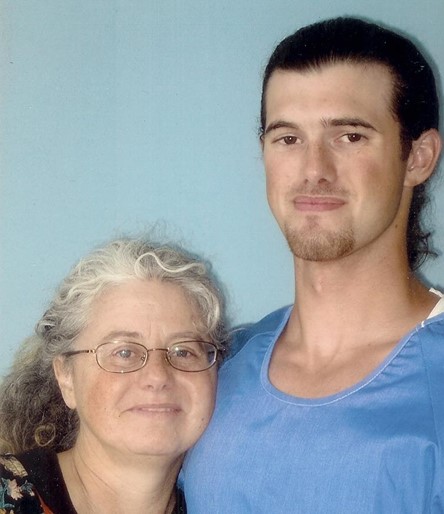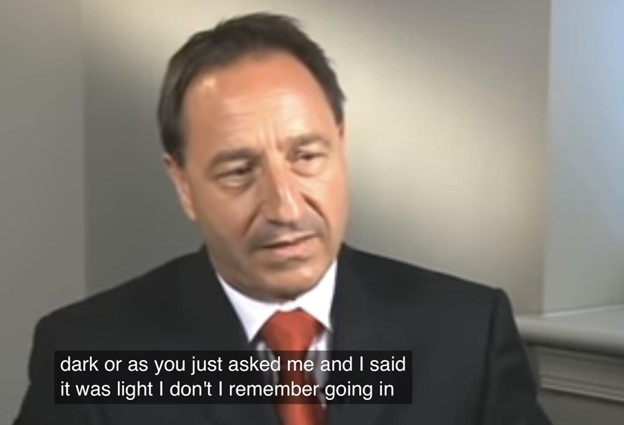

Scott Dyleski was sentenced to life without parole in September 2006 for the murder of Lafayette resident Pamela Vitale, wife of prominent defense attorney Daniel Horowitz, as previously reported by the Vanguard.
He was transferred to San Quentin Prison on his 18th birthday, becoming the youngest inmate in the California prison system at that time, and is currently serving his sentence at Corcoran State Prison.
But in 2011, private investigator Ralph Hernandez, uncovered myriad pieces of evidence never seen in court or by the public.
Hernandez is considered a national homicide investigative expert and was given a commendation by Clarence Kelley, then the Director of the Federal Bureau of Investigation.
“This questioned case definitely cries out for a re-opening and re-investigation of the case, including the activities of the police, the defense and the prosecution’s involvements,” Hernandez said.
Forensic science expert Brent Turvey conducted an examination of the evidence in 2011 concluding that many pieces of potentially exculpatory physical evidence were not  properly examined and that DNA results used to associate Dyleski with the murder were problematic and required an independent analysis.
properly examined and that DNA results used to associate Dyleski with the murder were problematic and required an independent analysis.
“It’s fairly evident the motive and fairly evident what happened,” Turvey said in a recent phone interview.
Turvey has performed casework as a Crime Scene Analyst, Crime Reconstructionist, Forensic Criminologist and Criminal Profiler for law enforcement agencies, attorney clients and private entities all over the world.
Turvey also found that the available evidence is not consistent with a profit motive and is most consistent with an anger or revenge motive.
“They didn’t do it because they didn’t want to go after the husband (Horowitz) at all,” Turvey said. It’s very clear he killed her and then walked around the house and moved a bunch of stuff.”
DNA material obtained from the swab of Vitale’s foot was only a partial match, according to Turvey’s findings.
“Whatever didn’t match was just removed or not reported by the DNA analyst,” Turvey wrote.
The forensic expert said this flawed methodology and subsequent false testimony are beneath best practice and raise the specter of potential fraud.
An independent DNA analyst must evaluate this possibility; this examiner must be without connections to Contra Costa County or the analyst in question, according to Turvey.
The attacker also placed a broken, bloody mug in the kitchen sink with DNA from saliva matching Horowitz.
There was a partial shoe print inside the house within a few feet of Vitale’s body which was lying in a pool of blood, yet no other shoe prints were found on the interior floors even though the murderer was in the living room, kitchen, and bathroom.
The partial print was claimed to be “similar” but not a “match” to the Land’s End shoe presented at the trial, but no analysis was conducted to compare any shoe characteristics to the characteristics seen in the print.
Now-retired Deputy District Attorney Hal Jewett planted in the jury’s mind that Dyleski had the Land’s End shoes on the day after Vitale was murdered, hoping to explain why Vitale’s blood could not be found in the crevices of the soles.
In a recent email, Jewett said there was overwhelming evidence of many different types that clearly and unequivocally establish Dyleski as the lone killer of Vitale.
Jewett was unavailable for further comment at the time of publication.
Witness statements to police investigators tell of Horowitz’s possible infidelity, threats made to witnesses and their families, fits of rage and Horowitz making inconsistent claims from the beginning of the case and in the years following.
Police interviewed a woman named Donna Powers who was close friends with Dr. Brenda Abbley, whom Powers suspected was having an affair with Horowitz.
Abbley knew Horowitz through her parents, the Lehmans, with whom Horowitz was friends.
Powers heard Abbley say she loved Horowitz and that he was the only man she ever heard Abbley speak of other than her ex-husband, according to police records.
Powers also told police she saw them kiss on the lips and when Horowitz came to Abbley’s home, they spent time alone together in Abbley’s bedroom.
When Powers called Abbley out of concern about her possible drug problem, Horowitz got extremely angry and threatened to have Powers lose custody of her daughter.
“Dan called me and told me Brenda [is] not allowed to talk to [me] ever again,” Powers said to police.
“If you ever talk to her again, I’ll make sure you lose custody of your daughter,” Horowitz told Powers.
Horowitz didn’t know Powers and wasn’t a friend of hers.
“And he showed me a side of a human being,” Powers said. “I mean he threatened me with my child. Who does that?”
Rick Ortiz was contacted by Horowitz to build the new house on the Canyon Road property in March 2002.
Ortiz wrote in a declaration that he, Horowitz and Vitale developed a “media plan” to make Mr. Horowitz a celebrity attorney to thereby obtain and secure higher hourly rates in the future.
During the construction of the home, Horowitz had largely foregone his day-to-day legal practice to elevate his status as a television commentator and radio personality, and increase general media exposure, according to Ortiz.
Ortiz said that the project suffered from many difficulties and that Horowitz often had difficulty finding ways to fund the development. Horowitz told Ortiz he was expecting a one million dollar bonus from a case and when that fell through, Horowitz came home angrier than he had ever seen him.
“I remember watching Dan on TV bashing his briefcase against the columns of the courthouse, and thinking this is not good,” Ortiz said.
Ortiz, owed over $200,000, said a week or two later that Horowitz threatened his family.
“He showed me pictures of my wife and kids outside our new home,” Ortiz said. “He said his family had sent someone down to take pictures and that he could not guarantee their safety. Dan said his family had ties with Union officials through an investment company his family ran. He said it was the ‘mob’ and they don’t ‘play.’”
Ortiz asserted that he was never contacted by any law enforcement officer, agency or entity in connection with Vitale’s murder and was never contacted by Dyleski’s attorney or anyone associated with her.
“I was never contacted by Mr. Dyleski’s appellate attorney, Phillip Brooks, or anyone associated with him,” Ortiz said.
The Contra Costa County Superior Court “addressed” most of these arguments in detail and explained why they were insufficient to establish that the performance of the petitioner’s trial counsel was deficient.
The superior court ruled petitioner’s arguments rely on conclusions in the Turvey Report and Laufer Declaration that are speculative and “fail to account for contradictory evidence.”
The court fails to mention or address the potential prosecutorial issues with this evidence not being used at the original trial.
Horowitz put two fingers on his neck as he described to the jury how he checked his wife’s vital signs to see whether she was still alive, he said in a 2006 interview with East Bay Times.
“I made myself get up and get on the phone,” he said. He called 9-1-1, told them the situation, then dropped the phone, leaving it off the hook so the dispatchers could trace the call.

A few years later Horowitz told The Heritage Foundation a different version of events. The full interview can be seen here.
Horowitz said when he called 9-1-1 that he then thought about the possibility of the attacker still being able to get in and he’s in an indefensible space.
He then said he put down the phone but then picked it up and called the Lafayette police department directly.
According to cell phone records, Mr. Horowitz placed a call to the Lehman household at 6:13 p.m. on October 15, 2005, minutes after calling the police to report finding his wife’s dead body.
Horowitz did not talk to the operator, but instead threw the phone down, leaving the line open, according to scottdyleski.org.
The 9-1-1 call Horowitz made at approximately 5:56 pm was excluded. The public has never heard it. However, it appears that at least 12-13 minutes of that call was recorded and, in addition to his verbal noises, he can be heard moving around in the house, toward and away from the phone.
Both Abbley and her mother corroborated to investigators that they had a conversation with Horowitz and each asked him if he had called the police along with notifying Vitale’s family members.
Horowitz said he had not and asked if they could call Vitale’s family but they declined.
They pressed him regarding why he hadn’t notified the police.
“What for? She is already dead,” Horowitz told them.
In 2008, an investigator tried to get access to Horowitz’s property which was denied by Horowitz in a letter.
“This is to confirm that your investigator is forbidden from coming on my property. This means that he cannot proceed on the private road past Wildwood Acres unless invited by a resident,” Horowitz wrote. “It particularly means that he cannot come up to my gate or drive on our property by the barn under any circumstance.”
Horowitz said neither he nor his wife wish to speak with the investigator and to not attempt to contact them.
